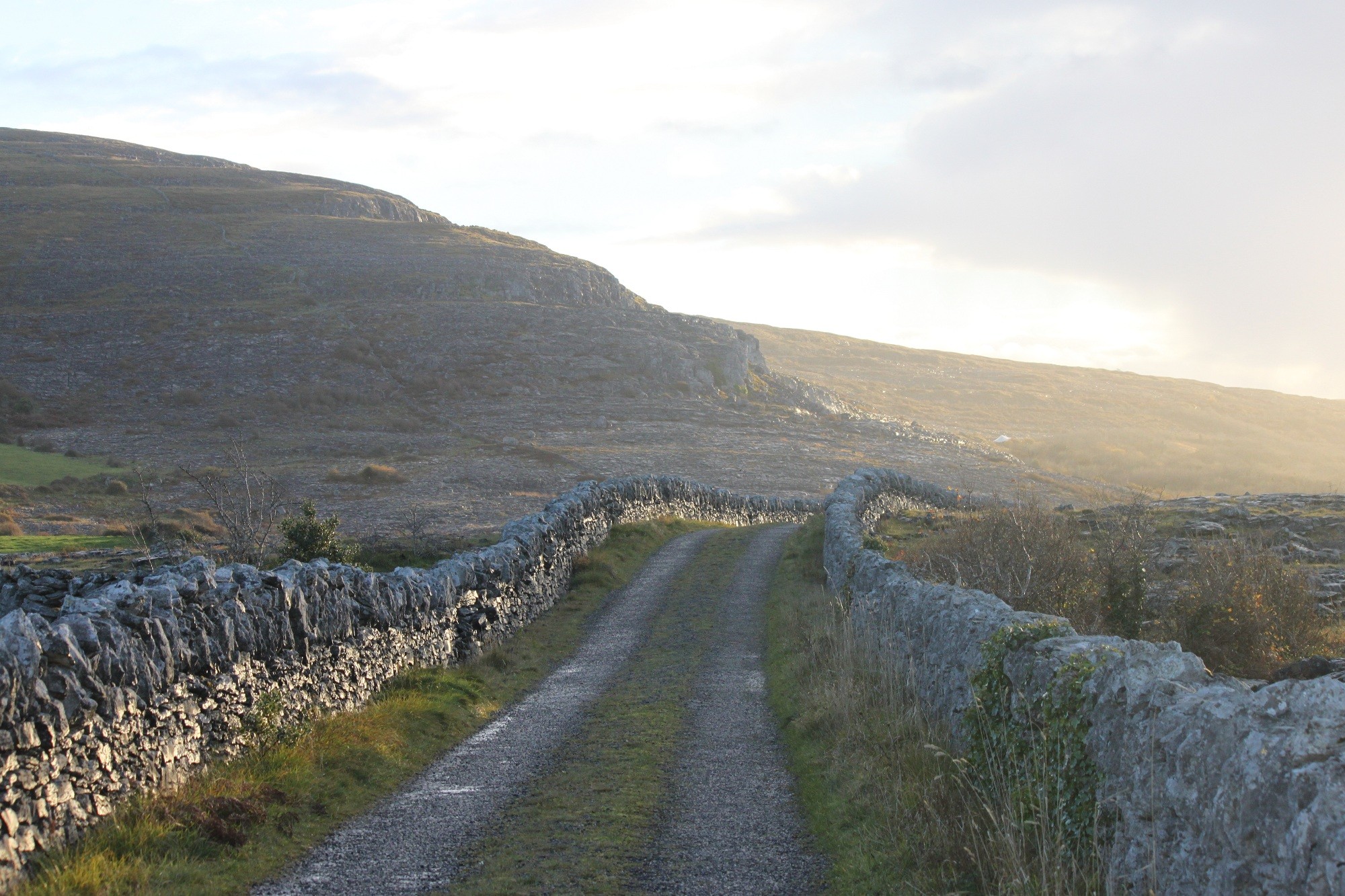THE HERITAGE OF THE BURREN – BY TONY KIRBY OF HEART OF BURREN WALKS
The Gaelic place name An Bhoireann has been phonetically anglicised to the Burren. An Bhoireann means a place of rock and thus the place name hints at the geological importance of the region. And so it is – The Burren is home to a rare and precious landform called karst. Karst is a landscape where the rock (usually though not always limestone) has been exposed to the atmosphere and is being chemically dissolved by rainwater. The Burren is the most extensive example of a karst landscape in Europe – 18,000 hectares of limestone pavement. As so much of the bedrock of the planet is exposed here, it is no wonder that the Burren can claim to be one of the most distinct landscapes in Europe.
The region is of outstanding significance also in terms of wildflowers. Bob Gibbons is a renowned botanist and nature tour leader. His stunning book Wildflower Wonders of the World was published by New Holland Publishers in 2011. In the book Gibbons profiles what he considers to be the top 50 botanical sites on earth. The Burren in County Clare features. Gibbons includes the Burren in the top 50 for two reasons – 1) the sheer abundance of flowers and 2) the unique combination of plants from different habitats and climatic zones in the world co-mingling together. This Arctic/Alpine/Mediterranean mélange attracts visitors from all over the world in the blooming season.
The Burren is also an exceedingly rich cultural landscape. It is estimated that there are about 4,000 archaeological monuments in the region thus making the Burren one of the richest archaeological landscapes in the north-west of Europe. The renowned Connemara-based cartographer and essayist Tim Robinson has described the region as being “a vast memorial to bygone cultures”. The oldest finds date from the Mesolithic period (7000-4000 B.C.).
Whilst the geology, botany and archaeology have been celebrated for decades, it is only in very recent times that the region’s remarkable agricultural heritage has been recognised. The Burren is the only region in Europe where livestock are transferred to altitude in winter (“reverse transhumance”). Science has now concluded that this low-intensity farming régime has an intrinsic link to the region’s wealth of heritage. The cattle manage the montane landscape perfectly by eating ultra-competitive grasses. Moreover, they naturally fertilise the soil with their droppings and lastly they also slow down the advance of scrub. The out wintering cattle are true guardians of the region’s heritage!
30 of Ireland’s 32 butterfly species. 70 of Ireland’s 72 land snail species. 700 of Ireland’s 1,000 wild flowers. 75 of the Ireland’s 512 Stone Age wedge tombs. 18,000 hectares of a rare global landform. Rich and varied wild life. One of the scarcest creatures in the world that we know of – a water beetle Octhebius Nilssonii …and on it goes…
In a world that is constantly trending towards monoculture, the Burren stands proudly as an oasis of heritage and diversity of life. Tar chugainn go bhfeice sibh. Come and see!

